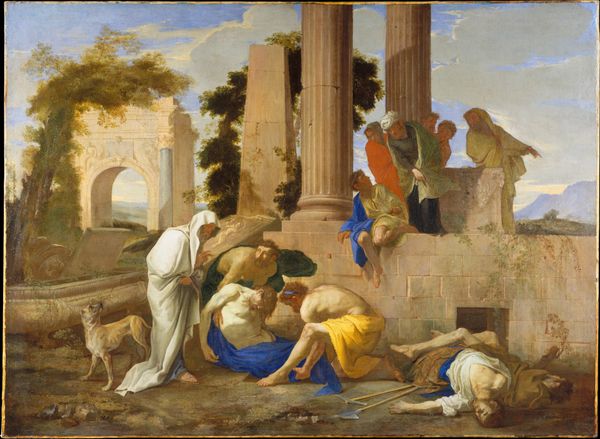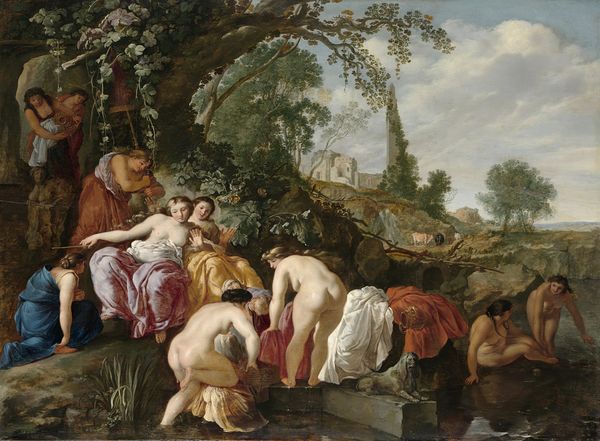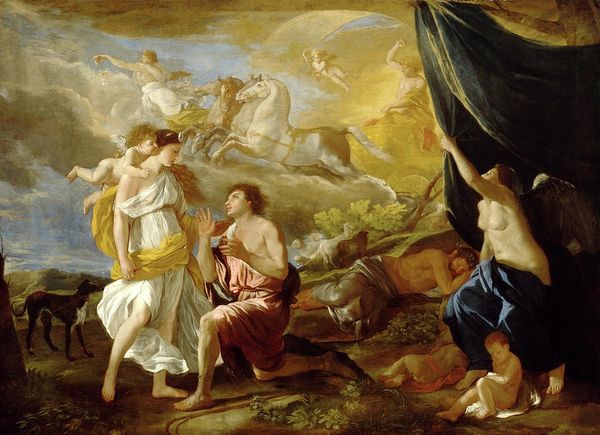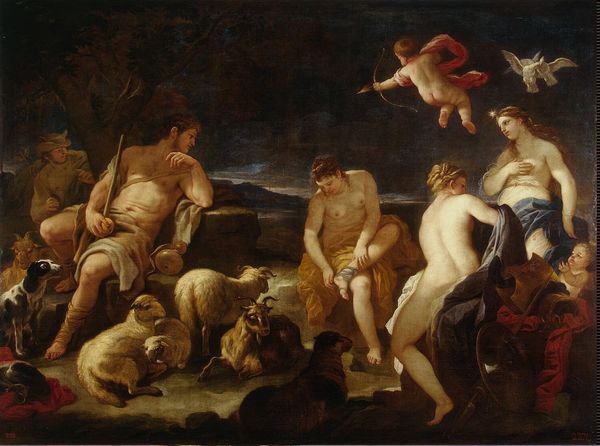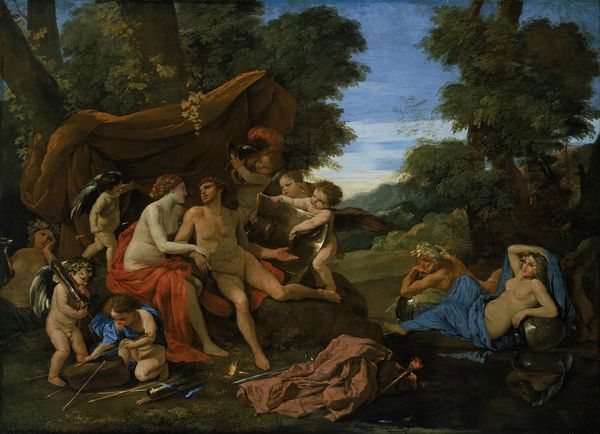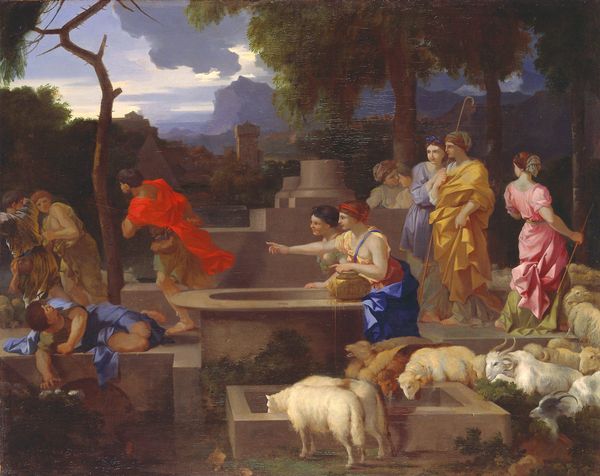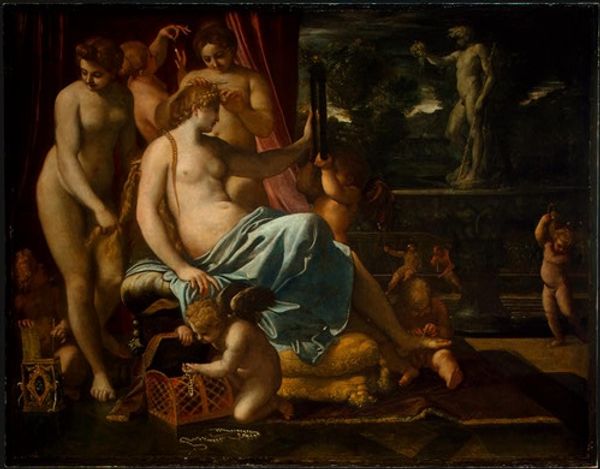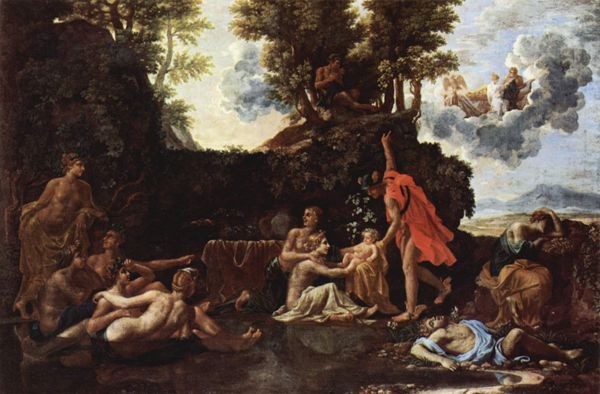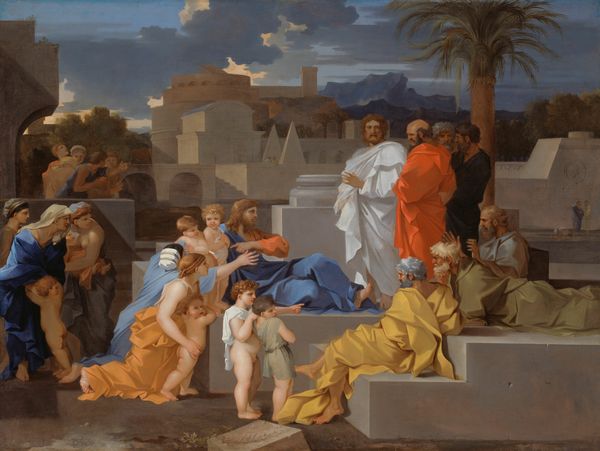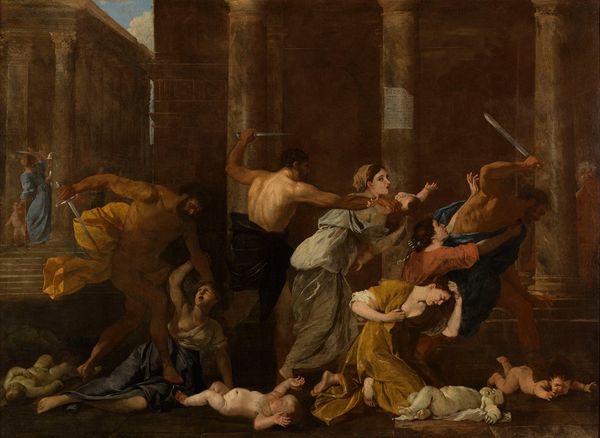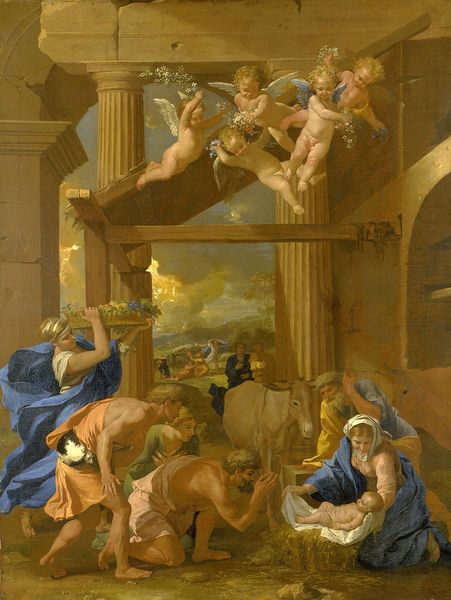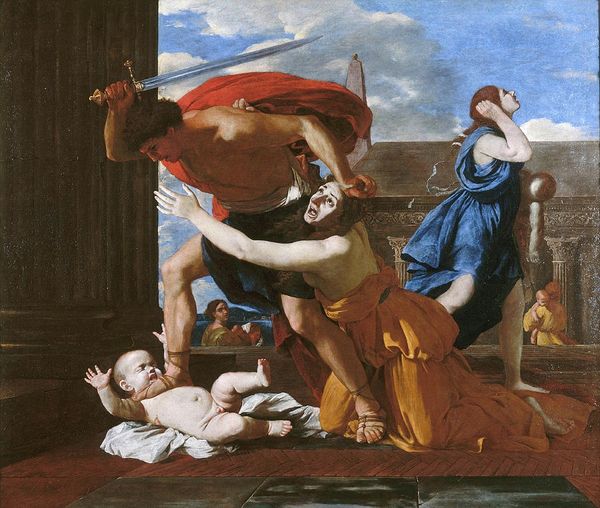
painting, oil-paint
#
baroque
#
painting
#
oil-paint
#
landscape
#
classical-realism
#
figuration
#
history-painting
#
academic-art
Copyright: Public domain
Curator: Let's turn our attention to this intriguing canvas; it's "Theseus Finding His Father's Sword," attributed to Nicolas Poussin. Editor: My eye is immediately drawn to the monumental quality of the ruins and the very earthy palette. It's restrained, almost subdued. Curator: Poussin, working in the classical tradition, would have been deeply engaged with the themes of heroism and lineage in Ancient Greek mythology. This painting touches on Theseus’s recognition of his royal identity, destined for kingship. Editor: I see that so vividly here! Notice how the light falls – the strong chiaroscuro sculpts Theseus's body, lending him immense presence, and echoes how the same light highlights the edges of the classical architecture. The contrast seems loaded, almost as if announcing him as one of the ancients reborn. Curator: Exactly. And placing this discovery within a decaying ruin can't be accidental, either. This visual choice serves to connect the idea of ancient virtue with that of the seventeenth century. There is commentary on legacy. We need heroes now, the composition tells us. Editor: What strikes me is how posed everything feels. Note how the figures seem arranged almost like a sculptural relief. Curator: This careful arrangement definitely speaks to a conscious awareness of stagecraft, and artifice in image-making more generally, but you have to think what this choice accomplished with its original audience. Aristocrats and intellectuals might have viewed it as aspirational and didactic. What does the weight of responsibility look like, and how can it be borne? Editor: It is incredibly compelling when you look at it that way. This seemingly simple act—uncovering a sword—becomes a powerful meditation on history, legacy, and the nature of heroism. Poussin's strategic play with color and form directs our understanding of the narrative. Curator: Considering the social environment Poussin occupied, and for whom this painting was produced, really transforms how one can analyze the painting itself, wouldn't you agree? Editor: Absolutely, and it is still amazing to consider how Poussin, working so many centuries ago, still manages to move us.
Comments
No comments
Be the first to comment and join the conversation on the ultimate creative platform.
